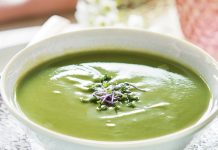Sweet, pickled, salty, whole or crushed, homemade preserves are indispensable in any pantry and very easy to prepare.

Practically any food, whether fruits, vegetables, mushrooms … It can be prepared canned, provided that the most suitable method of preparation is chosen for each one.
The important thing is that the ingredients are seasonal, very fresh and, if possible, organic.
When today we want to take a canned food, we usually resort to ready-made products that are sold in shops.
It is often believed that the preparation of a preserve is a laborious process full of culinary “secrets”. However, the preparation of a jam, a brine or a pickle can be a rewarding experience, within reach even of the smallest of the house.
The only requirement is to know a few simple rules and be meticulous when it comes to hygiene. For the rest, as in any other recipe, you can give free rein to the imagination to find the combination of colors and flavors that make it unique and personal.
HOMEMADE CANNED VEGETABLES
We rarely have the luxury of enjoying an authentic homemade preserve, such as those made by our elders or those prepared in rural areas to take advantage of surplus fresh seasonal foods. With vegetables we can prepare excellent preserves.
CANNED VEGETABLES IN NATURE: COOKING TIMES
The following table shows the previous preparation and approximate cooking times, in casserole or pressure cooker, of canned vegetables in the natural.
| Vegetable | Previous preparation | Time (bain-marie) | Time (pressure cooker) |
| Chard | Boil 10 minutes | 40 minutes | 20 minutes |
| Artichoke | Hangover | 1 hour | 40 minutes |
| Celery | Boil 15 minutes | 40 minutes | 20 minutes |
| Eggplant | Hangover | 1 hour | 40 minutes |
| Pumpkin | Hangover | 45 minutes | 30 minutes |
| Brussels sprouts | Boil 15 minutes | 1 hour | 40 minutes |
| Cauliflower and broccoli | Boil 10 minutes | 30 minutes | 20 minutes |
| Mushroom | Scald | 1 hour | 40 minutes |
| Endive | Boil 10 minutes | 1 hour | 40 minutes |
| Asparagus | Boil 13 minutes | 1 hour | 40 minutes |
| Spinach | Boil 5 minutes | 1 hour | 40 minutes |
| Pea | Scald | 1 hour | 40 minutes |
| Dried beans | Boil until cooked | 1 hour | 40 minutes |
| Green beans | Scald | 1 hour | 40 minutes |
| Pepper | Seed and boil 5-6 minutes | 1 hour | 40 minutes |
| Leek | Boil 30 minutes | 40 minutes | 20 minutes |
| Beetroot | Boil with skin, peel | 1 hour | 40 minutes |
| Mushrooms | Scald | 1 hour | 40 minutes |
| Tomato | Blanch and remove the skin | 30 minutes | 20 minutes |
| Carrot | Boil 20 minutes | 1 hour | 40 minutes |
PRESERVE VEGETABLES IN THE FORM OF PICKLES
Vegetable pickles are prepared with vinegar (acetic acid), and already clean vegetables, which are salted and left to stand for 12 hours.
Then the vinegar and vegetables are boiled, together or separately, and placed in the container.
After a week of maceration, the vinegar is cooked again and, once cold, packaged again.
After a month the pickle can be taken.
CANNED DRIED VEGETABLES
Desiccation or dehydration consists of reducing the water in the food you want to preserve.
This removes the moisture that microbes require to develop.
Dehydration is achieved by exposing the food to solar heat or the gentle heat of the oven.
In this process, evaporation should be 90%.
HOW TO PREPARE HOMEMADE FRUIT JAMS
To make jam you have to choose quality fruits that are not very ripe so that they preserve their pectin, which will give consistency to the product.
Cans must be sterilized, checking their good condition.
Obtaining a good jam depends on the right balance between the amount of sugar, pectin and degree of acidity.
Some fruits such as pineapple, peach, pear or melon contain little pectin, so they should be mixed with other fruits rich in it such as apple, plum or currant.
Fruits with a low acidity (fig, strawberry or quince) should also be balanced with lemon juice.
The elaboration process is simple: the fruit is cooked in a wide pot with a little water, depending on the juiciness of the fruit. Once some of the water and the cooked fruit have evaporated, add the sugar, stir and cook until the jam stabilizes.
Finally, it is packaged in cans, which will be stored once they have cooled.
THE APPLE SEED TRICK
Pectin is a complex carbohydrate that is found to a greater or lesser extent in all fruits and has the peculiarity that when heated and reacts with acids, it regulates the mixture, giving that typical consistency to jams.
The apple is a fruit very rich in this substance, especially its skin and seeds, for that reason, if we prepare a preserve with ingredients poor in pectin, we can solve it by introducing a bag with the skin and seeds of several apples at the time of cooking the fruit.
The bag should be removed when the fruit is cooked, just before pouring the sugar or syrup.
HOMEMADE PRESERVES: BENEFITS OVER INDUSTRIAL PRESERVES
The preserves fill the pantries with life and allow you to face any eventuality, such as the unexpected arrival of guests.
In addition, thanks to them we can enjoy a great diversity of foods outside their specific season and at any time of the year.
The great advantage of preparing them yourself is that you can control the quality of the ingredients and get rid of the chemical additives that are usually contained in preserves of industrial origin.
The preparation of fruits, such as jams or jams, is one of the most attractive ways to get started in its preparation.
Commercial products contain a lot of sugar to extend their conservation and is usually white, however, when preparing a jam at home you can use whole cane sugar, more complete than white sugar, or even try alternatives such as syrups or apple concentrate.
In any case, it is preferable to reduce the amount of sugar to obtain pure and healthy flavors, although this reduces the shelf life.
Yes, nutrients are lost when preserving a food, especially vitamins, due to the effect of oxidation and heat. However, this loss is very similar to that suffered by these foods when cooked.
However, the nutritional value of canning will depend a lot on the method used in its preparation, because in fermentations, such as sauerkraut (fermented cabbage), the nutritional contribution increases considerably when vitamins C and group B are synthesized.








